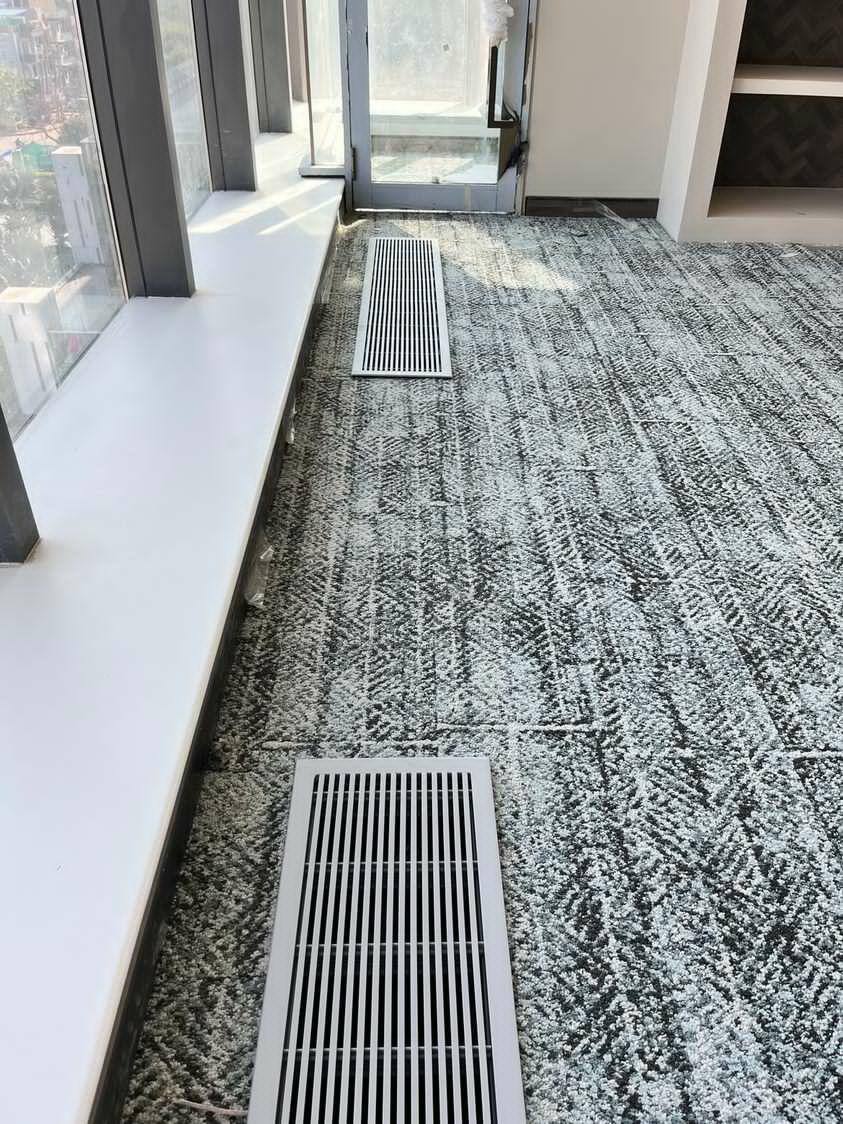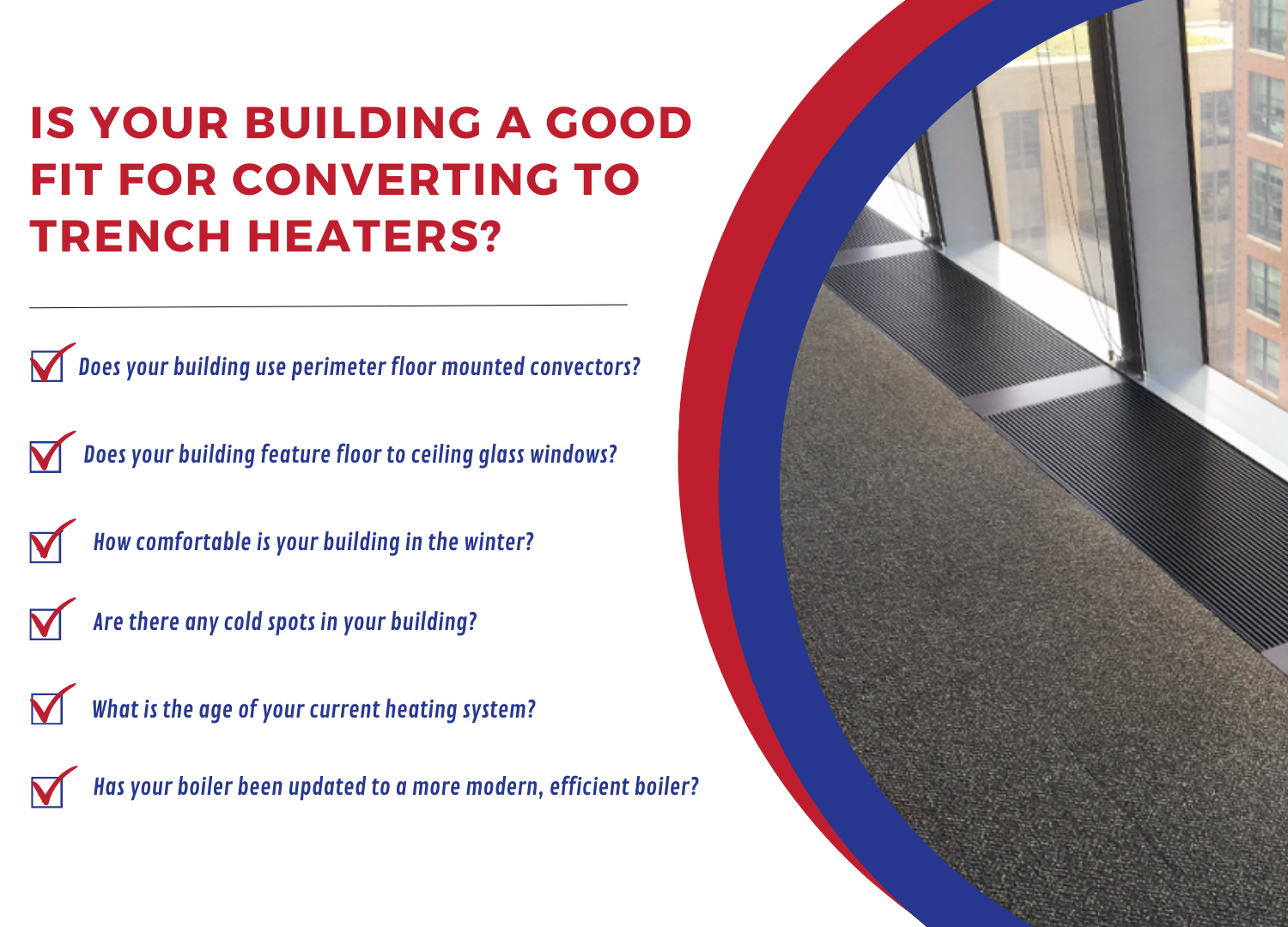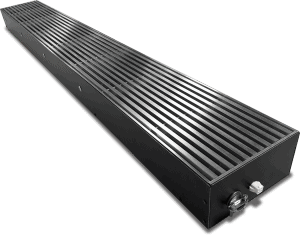Is Your Building a Good Fit for Converting to Trench Heaters?
Building technologies are advancing every day. From smart glass that automatically dims to decrease heat gain from the sun during the day to...
Floor, wall and ceiling mounted to meet your unique project design.
4 min read
AirFixture : Oct 4, 2024 1:03:52 PM

Architectural photography often highlights the open, airy feeling a space gets from floor-to-ceiling glass. What it doesn’t capture is what all that glass feels like on a cold winter’s day.
Perimeter systems are the unsung heroes of HVAC design, quietly working to maintain thermal comfort along the vulnerable edges of buildings. These systems combat heat loss or gain through exterior walls and windows, preventing uncomfortable drafts and temperature fluctuations.
By strategically placing perimeter heating or cooling sources, property developers can optimize energy efficiency and enhance occupant comfort. Choosing the right perimeter system is crucial for achieving optimal supplemental heat. At AirFixture, we design our perimeter systems to meet the needs of each unique project. Creating a comfortable and efficient building environment requires understanding the strengths and weaknesses of different types of HVAC systems.
A well-designed perimeter system is essential for several reasons:
Thermal Comfort: Perimeter systems create an insulated barrier that limits heat loss or gain and helps regulate the temperature of the air circulating throughout a space. In limiting loss and gain, perimeter systems prevent cold drafts and hot spots, ensuring consistent comfort for occupants.
Energy Efficiency: These systems reduce the overall heating and cooling load, lowering energy consumption and reducing operating costs. As an added plus, they are easily accessible, creating less downtime when performing regular maintenance as compared to traditional overhead heating systems.
Improved Indoor Air Quality: Some perimeter systems, like trench heaters, can help distribute fresh air and reduce indoor pollutants.
.jpg?width=622&height=829&name=IMG_6842%20(2).jpg)
Perimeter systems come in all shapes and sizes, but three major classifications of perimeter systems stand out from the rest.
Trench heaters are a popular choice for perimeter heating due to their space-saving design flexibility and effective heat distribution. These units are installed in floor, typically hidden from view by floor coverings. They operate by drawing in cool air naturally, heating it, and releasing warm air into the room. Trench heaters can be natural convection or fan-assisted, depending on the desired heating speed and distribution.
AirFixture offers trench heating units tailored to fit an individual project’s needs. Our Soho fan-assisted trench heaters can be either electronic or hydronic heating units and can be configured in an underfloor trench, along the wall or ceilings to accommodate design choices.
Slab heating offers heat distribution for exceptional comfort throughout an entire space, including the perimeter. Warm water or electric cables are installed throughout the slab, gently heating the entire floor surface. Slab heating systems provide even heat distribution and can be used for both heating and cooling.
Comparison with trench heaters:
Chilled beams are primarily used for perimeter cooling. They combine convection and radiant cooling to efficiently remove heat from a space. Chilled water circulates through the beams, using less energy than traditional air cooling. Active chilled beams often require integration with other HVAC systems for optimal performance. Passive chilled beams rely solely on natural convection. AirFixture offers both overhead and in-floor chilled beams.

With so many options to heat and cool a building perimeter, it may seem hard to choose the right solution for your unique needs. When comparing perimeter systems, we recommend comparing the systems’ efficiency and energy performance, design aesthetic and space considerations, and overall performance and occupancy comfort.
Selecting the right perimeter system is essential for creating a comfortable, energy-efficient, and aesthetically pleasing building environment. Trench heaters offer a practical and efficient solution for perimeter heating. At AirFixture, we work directly with our clients to identify their perimeter heating and cooling needs and create a solution within your timeline and budget. To learn more about perimeter heating and cooling and to talk to an AirFixture engineer about your project, contact us today.

Building technologies are advancing every day. From smart glass that automatically dims to decrease heat gain from the sun during the day to...

Architects, builders and engineers are always looking to push the envelope in their commercial building designs. These unique designs capture...

AirFixture’s Trench Heating will increase your market value by maximizing indoor floor space, providing better occupant comfort and elevating...